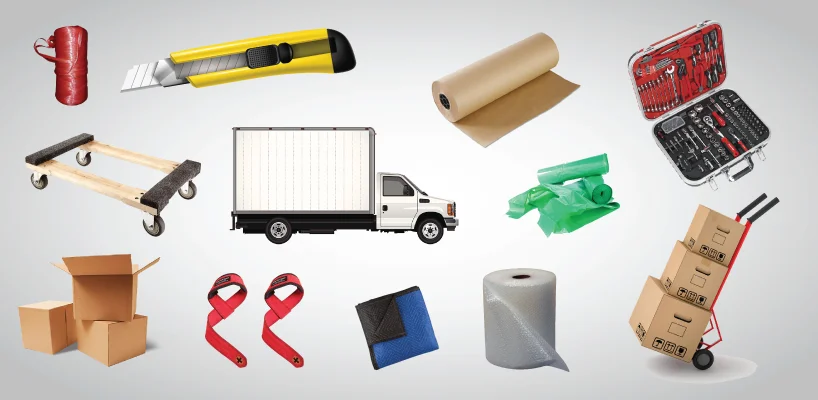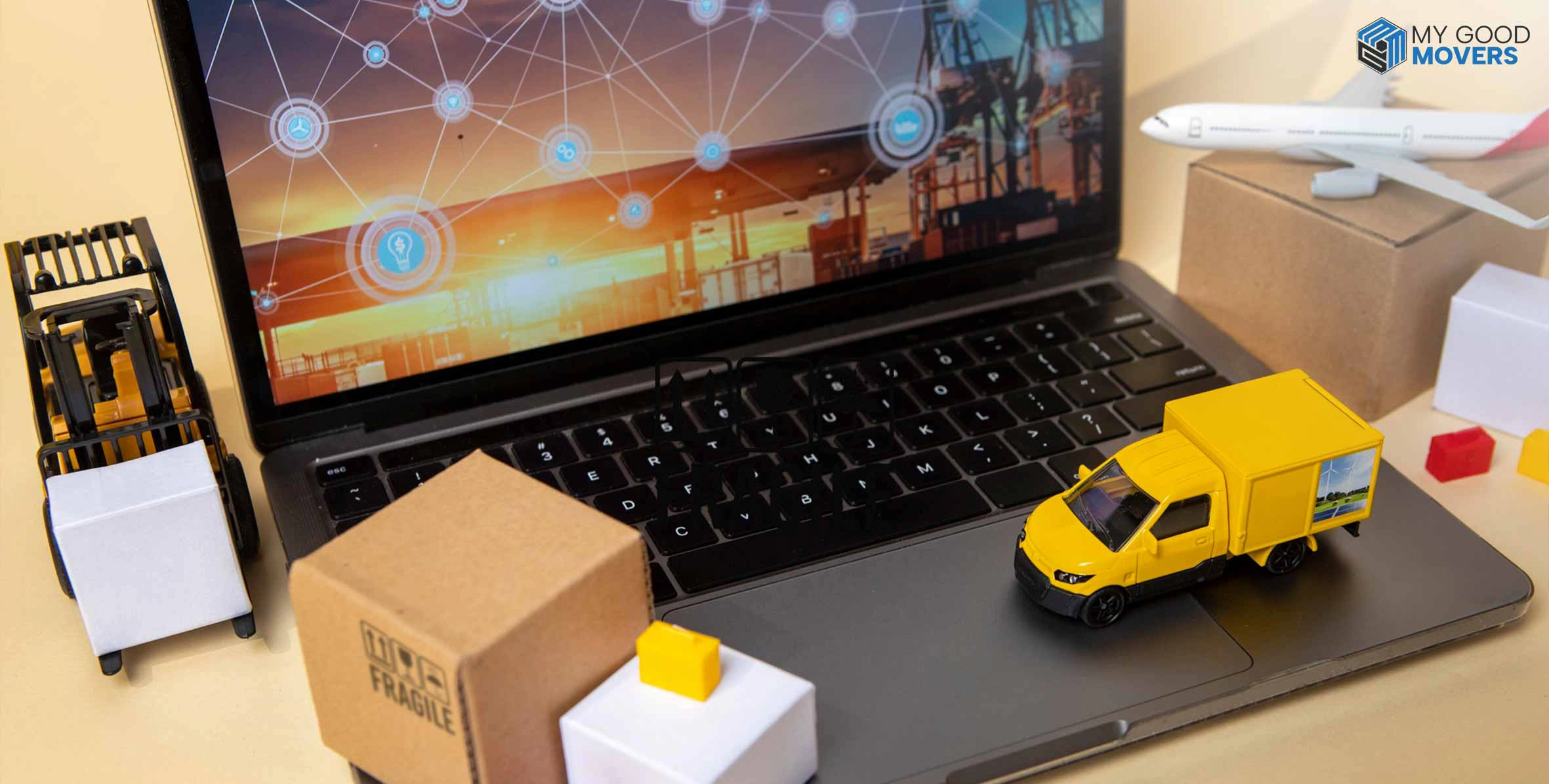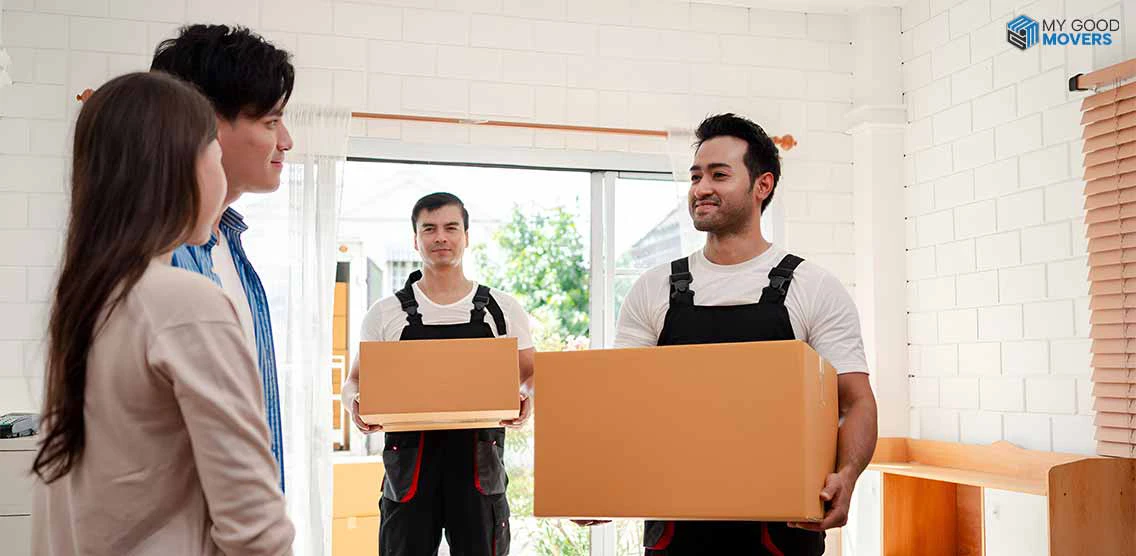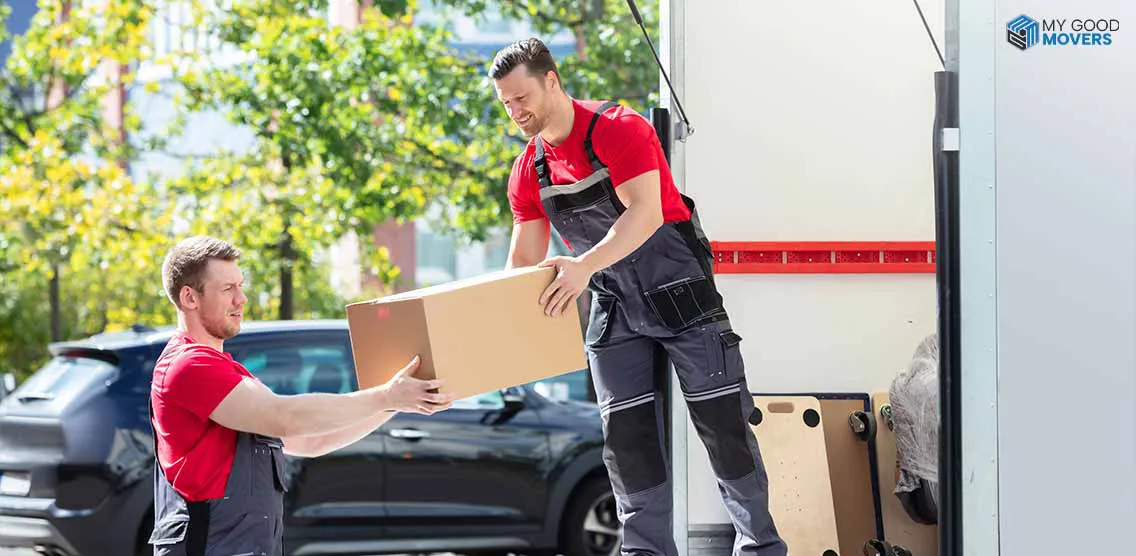Failing to prepare is preparing to fail. We all know moving without the right gear is like showing up to a snowball fight in flip-flops.
Whether you're planning a DIY move or just trying to not look totally clueless when the pros show up, understanding moving equipment is step one. And it’s not just about cardboard boxes and duct tape anymore.
There’s a whole lineup of tools out there designed to protect your stuff and keep your sanity intact.
Did you know that, according to the U.S. Census Bureau, over 10% of Americans move every year. And a huge number of those people underestimate how much equipment they’ll need.
No wonder moving injuries send around 15,000 people to the ER each year (source: U.S. Consumer Product Safety Commission).
So if you’re asking, “What equipment do I need to pull off a smooth move?” or “What do movers actually use behind the scenes?” — this guide is for you.
By the end, you'll be using words like furniture sliders, appliance dolly, and moving blankets like an expert mover.
Why Do You Need Moving Equipment?
Moving can be stressful, and without the right tools, it can quickly turn into a time-consuming mess. That's why you need moving equipment.
Here’s why using the right moving equipment actually matters:
Protects Your Belongings
Without the proper tools, your items are more likely to get scratched, broken, or damaged during the move. Equipment like furniture pads, moving blankets, and straps helps keep everything in place and protected while in transit.
Reduces Physical Strain
Lifting and carrying heavy boxes, furniture, or appliances puts a lot of pressure on your back and joints. Tools like dollies, hand trucks, and lifting straps reduce that strain and help you move heavier items with much less effort.
Saves Time
When you have the right gear, the job gets done faster. Instead of making multiple trips or struggling to fit things in awkward spaces, equipment helps you load, move, and organize more efficiently.
Improves Safety
Using proper moving tools lowers the risk of accidents and injuries. Things like non-slip gloves and appliance dollies are designed to make handling bulky or heavy items safer, for both you and the people helping you.
Makes the Process More Organized
Moving is more than just lifting things. It’s about planning and staying organized. With things like labeling tools, plastic bins, and furniture sliders, you can pack and position your items in a way that makes unpacking much easier later.
Helps You Move Like an Expert
Even if you're not hiring professional movers, using the same tools they use gives you a much smoother experience. It turns a stressful day into a well-managed task.
Top 10 Moving Equipment and Supplies
Below is the best moving equipment required to make your move as smooth as a breeze.
Box Cutter
The box cutter is designed to effortlessly slice through any type of cardboard box and other tough packing materials with precision and ease. The secret lies in its sharp blade, which ensures that the cut is clean every time, making it a breeze to open boxes without any messy tearing.
This simple yet effective tool is a lifesaver for any mover. It makes the overwhelming task of unpacking and organizing much easier.
Boxes and Plastic Bags
Boxes and plastic bags are your best friends when packing up your belongings for a move. Boxes, available in different sizes, are perfect for storing everything from books to kitchenware. They keep your items safe and organized during transportation.
Meanwhile, plastic bags come in handy for smaller items and loose belongings like clothes or toys. They help prevent items from getting lost or scattered during the move. Together, these essential moving supplies ensure your belongings are packed efficiently.

Need Boxes Without the Price Tag? Find out where to get moving boxes for free and save big while prepping for your move.
Moving Dolly
A moving dolly is one of the most renowned pieces of moving equipment. Imagine having a piece of equipment that can effortlessly carry heavy objects on the go—a moving dolly does just that! It has a wheeled platform with handles, making it easy to move bulky or heavy items with minimal effort.
Moving Blankets and Pads
It is always a good feeling to wrap your valuable furniture and delicate items in a cozy shield of protection. This is where moving blankets and pads come into play. These thick, padded layers act as a buffer against scratches, dents, and damage during the hustle and bustle of your move.
Bubble Wrap
Bubble wrap allows you to wrap your fragile items in a tiny protective layer. This lightweight packaging material is essential for providing a cushioning shield to all your delicate belongings during transit. Each tiny bubble acts as a shock absorber, which guards against bumps and impacts along the way.
Moving Straps and Rope
Using moving straps and rope in conjunction with moving dollies can make the entire moving process much easier.
Ropes and straps can add that extra layer of protection by keeping all your belongings, such as boxes, appliances, and furniture, tightly secured on the moving dolly or truck. These are especially useful if you are performing a DIY move.
Moving Van
Moving vans are known for being spacious, with ample space, loading ramps, and weatherproofing, which makes them the ultimate transporter for your belongings. You can transport your belongings to your desired location in one go. Whether you are performing a local move or a long-distance move, a moving van should be your go-to choice.
Tool Kit
Tool kit is a must-have moving equipment. Think of it as your moving day multi-tool that is compact, offers multiple uses, and is ready for any task.
With screwdrivers, wrenches, and pliers at your disposal, you can easily tackle furniture assembly and minor repairs. From disassembling beds to fixing loose hinges, your toolkit ensures you are prepared for any moving challenge.
Packing Paper
Packing paper is your secret weapon for wrapping and protecting your delicate items during the move. With its soft texture and lightweight design, packing paper provides an extra layer of cushioning to protect your belongings from any scratches or breakage.
Hand Trucks
Hand trucks are known for effortlessly transporting heavy loads during a move. With their sturdy frames and convenient design, hand trucks make it easy to move bulky furniture, stacked boxes, and other heavy items with minimal effort.

Moving Big Stuff? Use the Right Tools. Learn the difference between hand trucks and dollies so you can move furniture and appliances without the hassle.
Other Types of Moving Tools and Equipment
Other special tools can make moving easier and keep your stuff safe.
- Furniture sliders: They make it easy to move large pieces of furniture across floors without causing any scratches or scuffs.
- Electric drill and hammer: They come in handy for disassembling and reassembling furniture.
-
Label marker: Labelling boxes with their contents and destination rooms helps you stay organized.
Honorable mention goes to:
- Mattress bags, mirrors and wardrobe boxes provide extra protection for fragile or bulky items during the move.
- Roof racks and cargo carriers are important for carrying large items or extra belongings that won't fit in the moving truck.

Planning a Long-Distance Move? Compare top-rated long-distance movers with verified reviews and transparent pricing.
Equipment for Handling Bulky Items
Bulky furniture and oversized appliances are some of the toughest parts of any move. They’re heavy, awkward, and can quickly become dangerous if you’re not using the right tools.
There is some equipment designed specifically to make these challenges easier and safer.
Furniture Dollies
These flat platforms on wheels are really helpful for large pieces like sofas, dressers, and desks. Just lift one side of the item, slide the dolly underneath, and roll it to your truck.
Hand Trucks (Two-Wheel Dollies)
Perfect for stacking and moving heavy boxes, small appliances, or awkward items like file cabinets. They help you move more in less time while keeping everything upright and stable.
Lifting Straps
Also called shoulder dollies or moving harnesses, these straps use your body’s strength more efficiently, making it easier to lift and carry heavy items without putting all the pressure on your back. Great for things like washers, dryers, or even a mattress.
Renting vs. Buying Moving Equipment
When you are planning your move, you might wonder if you should rent or buy moving equipment. Each choice has its own pros and cons, so you have to think about what works best for you.
Renting Moving Equipment
| Pros | Cons |
|---|---|
| Cost-effective | Limited selection of equipment options |
| Flexibility | Rental costs accumulate over time |
| Convenience | Dependency on rental availability |
| Professional assistance | No long-term ownership or potential for resale |
| Reduced maintenance |
Buying Moving Equipment
| Pros | Cons |
|---|---|
| Long-term investment | Higher upfront costs |
| Customization options | Requires storage space |
| Availability | Responsibility for maintenance and repairs |
| Potential resale value | Depreciation of equipment value over time |
| Familiarity and control |

Avoid Rookie Packing Mistakes. Discover the biggest packing mistakes people make and how to sidestep them like a pro.
Tips to Use Moving Equipment Efficiently
Below are some tips on how to use the equipment efficiently during your move.
-
Plan Ahead: Before using moving equipment, carefully plan your moving process. Determine the type and quantity of equipment needed based on the size and nature of your belongings.
- Learn Proper Usage: Take the time to familiarize yourself with the operation of each piece of moving equipment, whether it's a dolly, hand truck, or moving straps. Understand how to use them correctly.
- Distribute Weight Evenly: When loading items onto moving equipment, distribute weight evenly to prevent imbalance or tipping.
- Secure Items Properly: Use straps or ropes to secure items when moving equipment. This prevents shifting or falling during the transition.
- Communicate and Coordinate: Clear communication and coordination are essential if you work with a team to move heavy or bulky items.

Packing Timeline That Actually Works. Learn when to start packing for a move and avoid last-minute chaos with a step-by-step schedule.















































 (239) 799–6077
(239) 799–6077